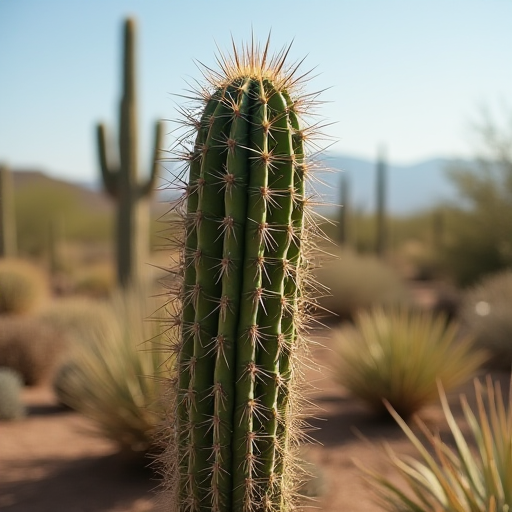
Why Do Cacti Have Spines?
Cacti are some of the most intriguing and resilient plants found primarily in arid and semi-arid regions. They are well-known for their unique appearance, primarily characterized by their spiny exteriors. The adaptation of spines in cacti is a fascinating aspect of their biology, serving multiple purposes crucial for their survival in harsh environments. This article delves into the reasons why cacti have spines, exploring the various functions these structures serve.
1. Protection from Herbivores
One of the most apparent functions of spines is to protect cacti from herbivores. In desert environments, where vegetation is sparse, any plant matter can become a valuable food source for animals. The spines deter animals from eating the cactus because they can cause physical harm or discomfort. This defensive mechanism is critical for the plant's survival, as losing vital tissue to herbivores would severely affect its ability to store water and nutrients.
2. Reduction of Water Loss
Cacti have adapted to thrive in environments with limited water availability. Spines play a crucial role in reducing water loss through a process known as transpiration. Unlike regular leaves, which have a large surface area that can lead to significant water evaporation, spines have a much smaller surface area, minimizing water loss. Additionally, the spines can create a humid microclimate around the cactus by trapping moisture from the air, further reducing evaporation.
3. Shade and Temperature Regulation
In the desert, temperatures can soar during the day and drop significantly at night. The spines provide shade to the cactus surface, helping to reduce the temperature and prevent overheating. By casting shadows on the body of the cactus, spines help to moderate the plant's internal temperature, protecting the tissues from damage caused by intense sunlight and extreme heat.
4. Rainwater Collection
Interestingly, spines can also aid in water collection. In some cases, the spines can help direct rainwater toward the base of the cactus, where it can be absorbed by the roots. This adaptation is particularly beneficial during rare rain events in the desert, maximizing the plant's ability to capture and utilize water.
5. Structural Support
While not as significant as other functions, spines can provide structural support to cacti. The dense network of spines can help stabilize the plant against wind and erosion, which are common in open desert landscapes. This support ensures that cacti remain upright and intact, even in harsh weather conditions.
6. Camouflage and Mimicry
Some cacti have evolved spines that help them blend into their surroundings, providing a form of camouflage. This adaptation can make it more difficult for herbivores to spot them. Additionally, the presence of spines can mimic the appearance of dead or inedible plants, further deterring animals from attempting to consume them.
7. Evolutionary Advantage
From an evolutionary perspective, the development of spines has given cacti a significant advantage in their natural habitats. By evolving these protective and adaptive structures, cacti have been able to colonize some of the most inhospitable environments on Earth, showcasing their incredible resilience and adaptability.
Conclusion
The spines of cacti are much more than mere decorative features; they are multifunctional adaptations that have evolved to ensure the survival of these remarkable plants in some of the world's most challenging environments. By providing protection, minimizing water loss, regulating temperature, aiding in water collection, offering structural support, and even serving as camouflage, spines are essential to the success of cacti in the wild. Understanding these adaptations not only highlights the complexity of plant evolution but also underscores the intricate balance of ecosystems where these resilient plants thrive.
